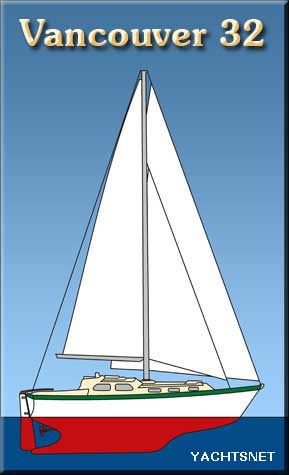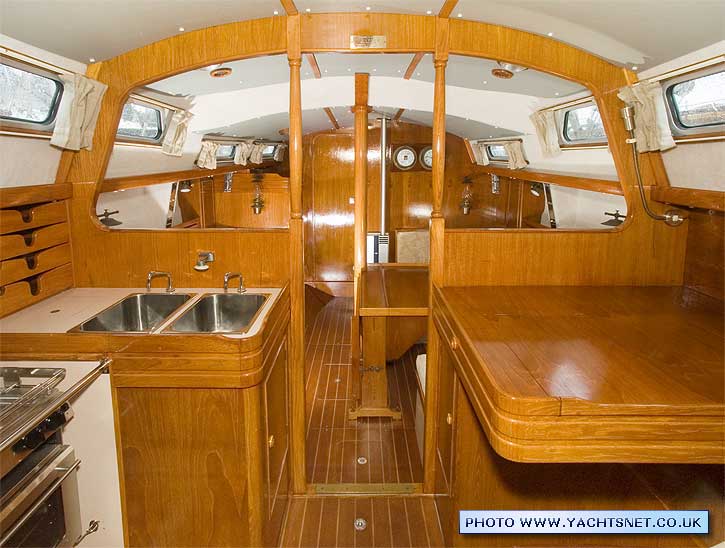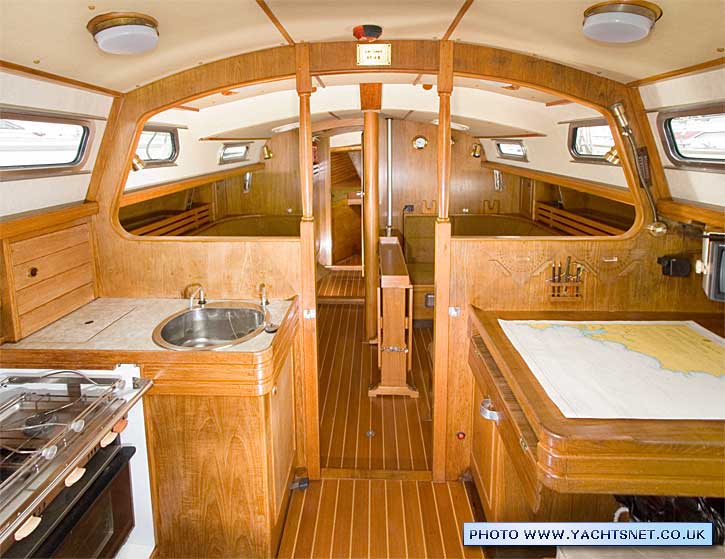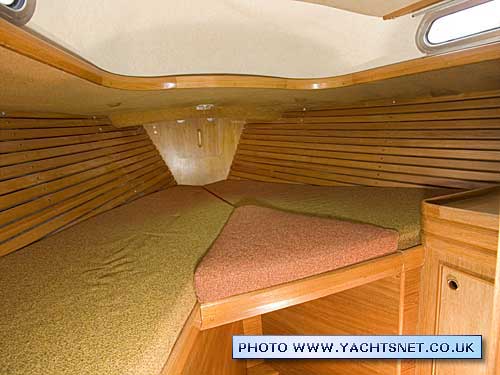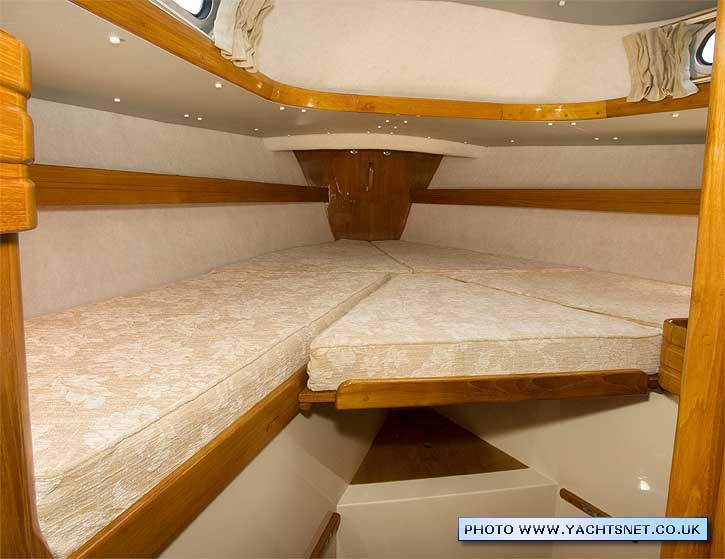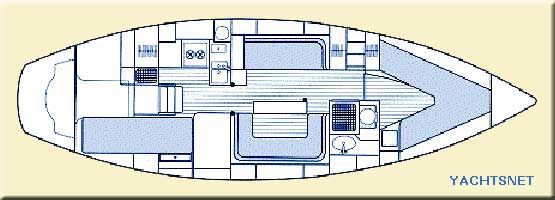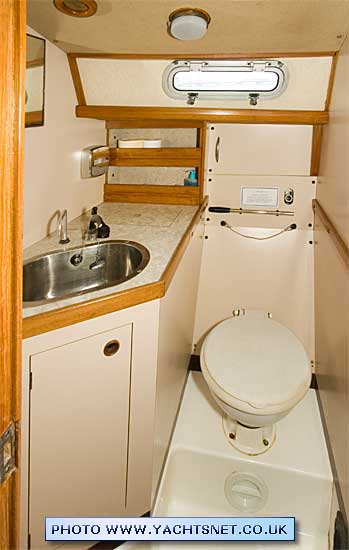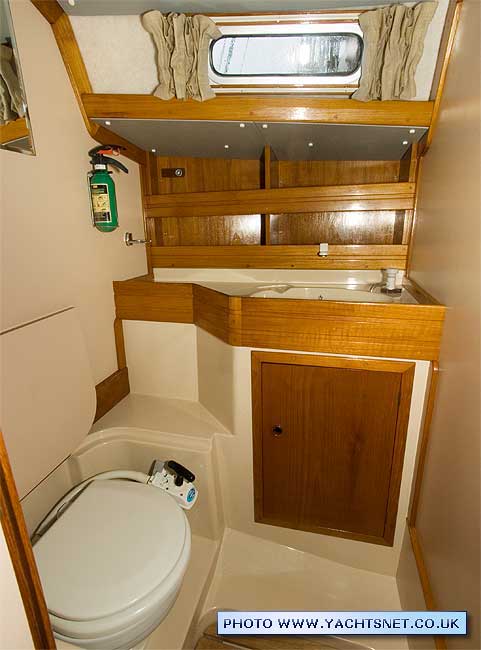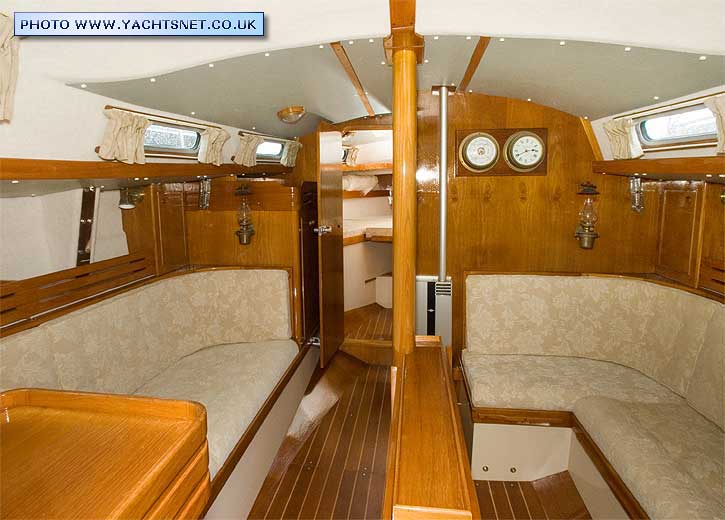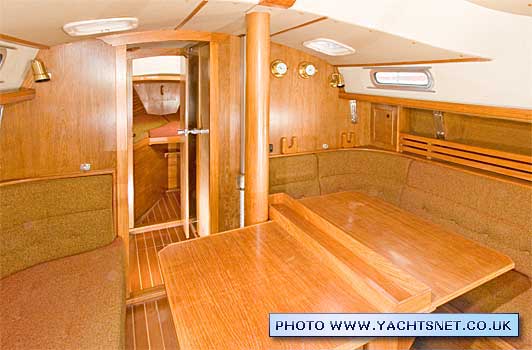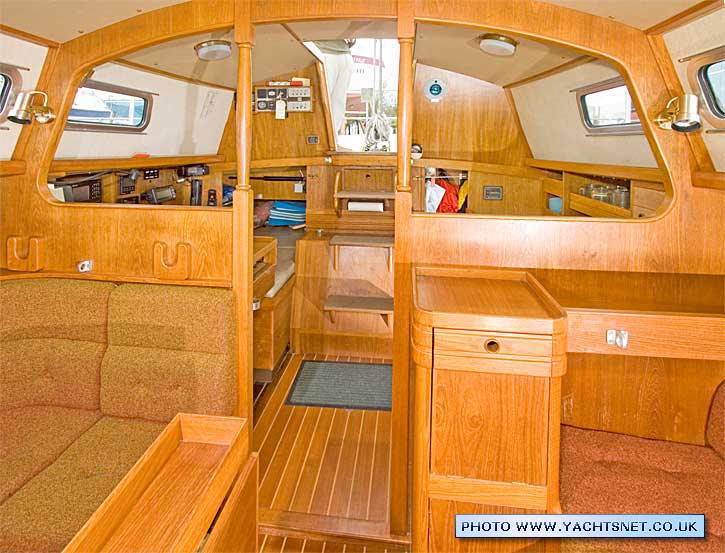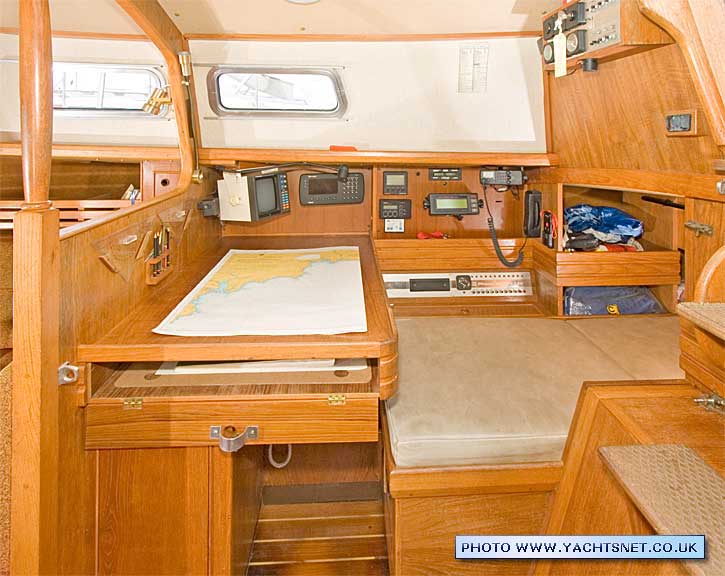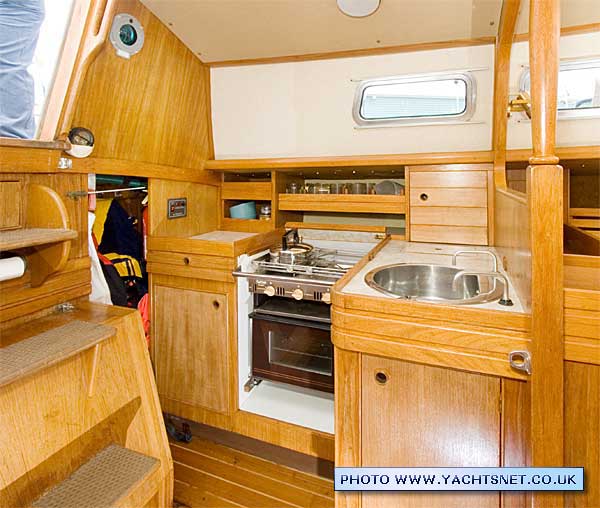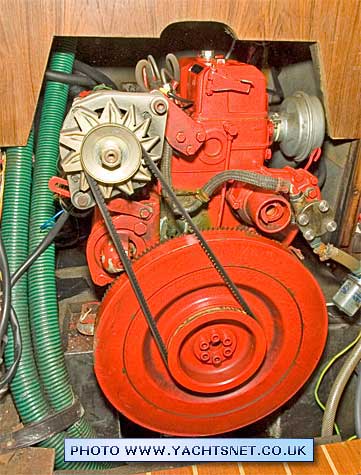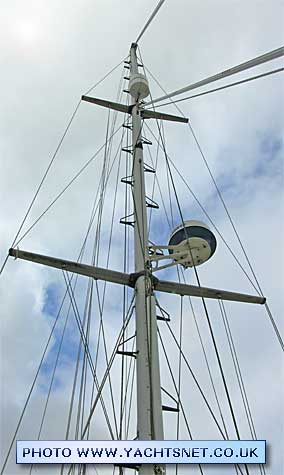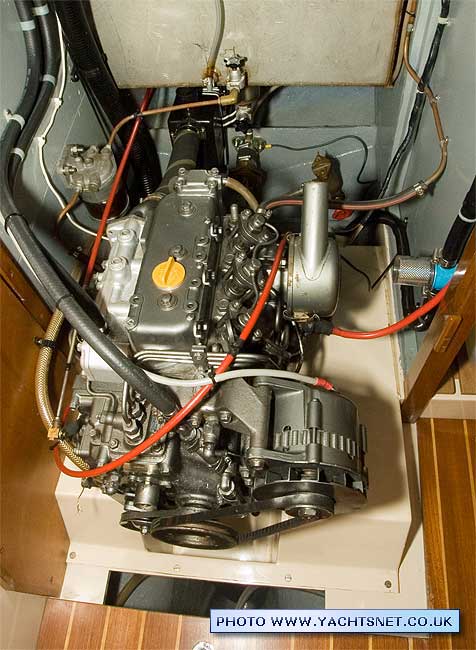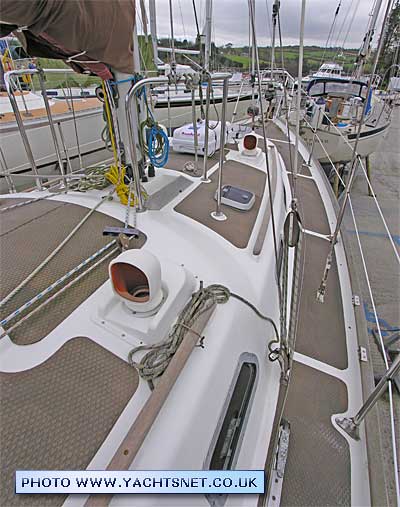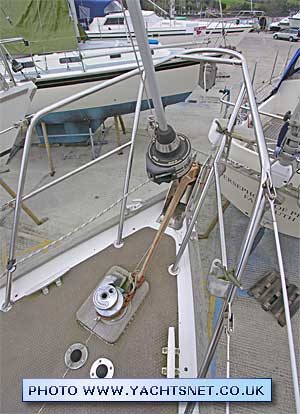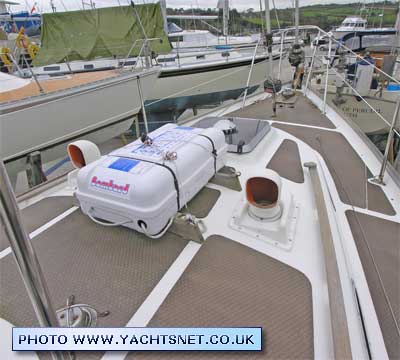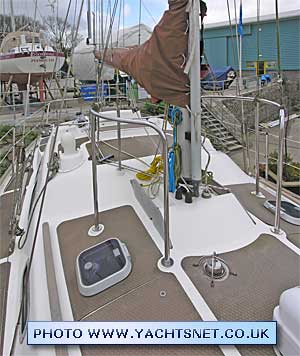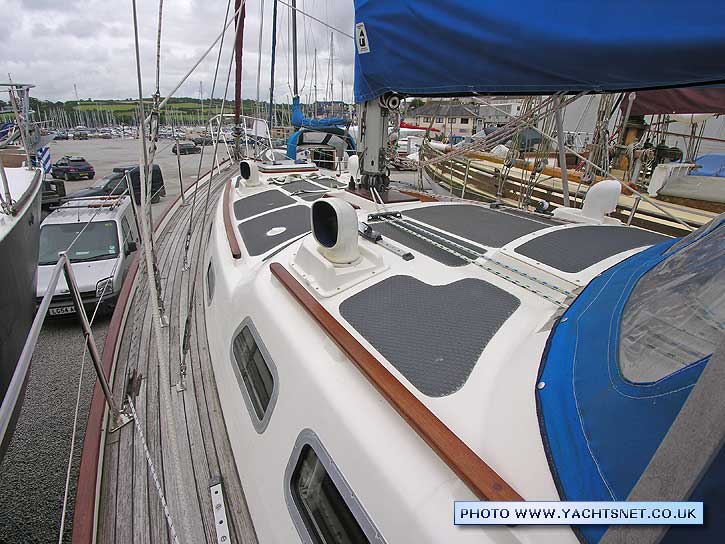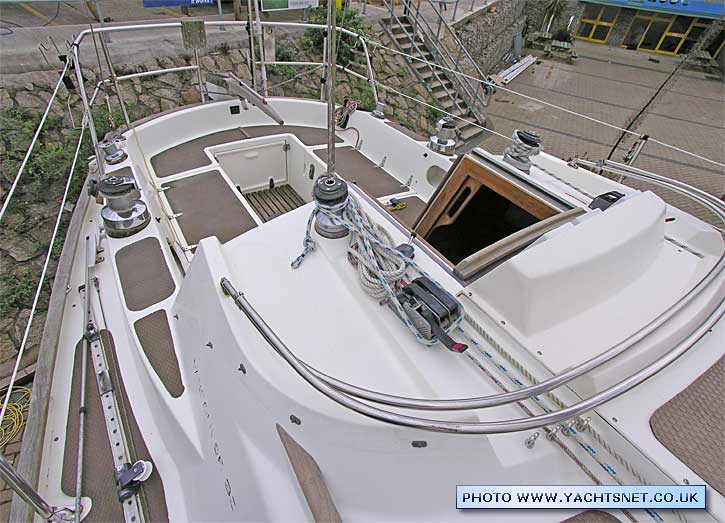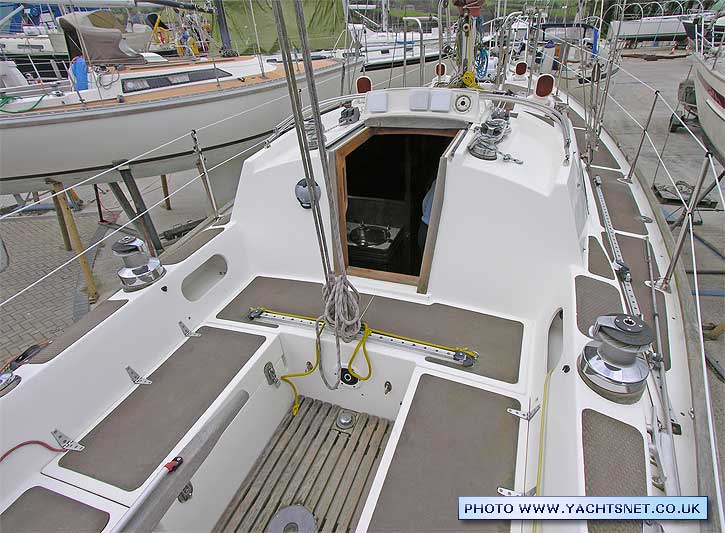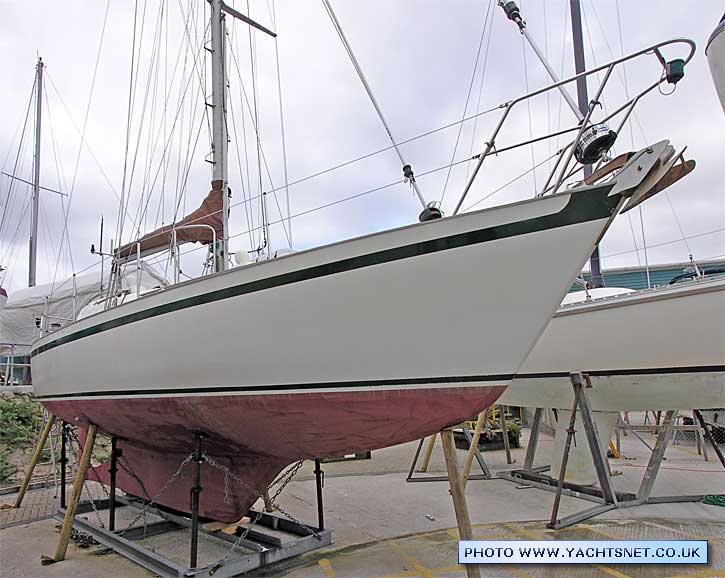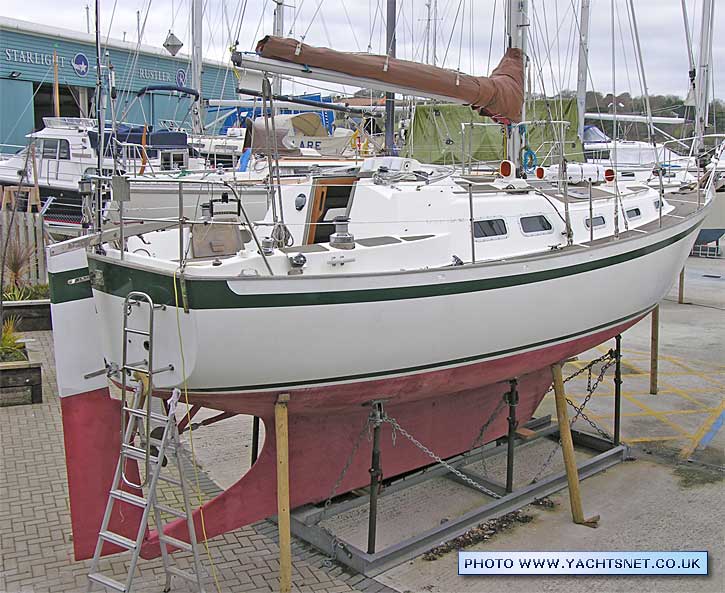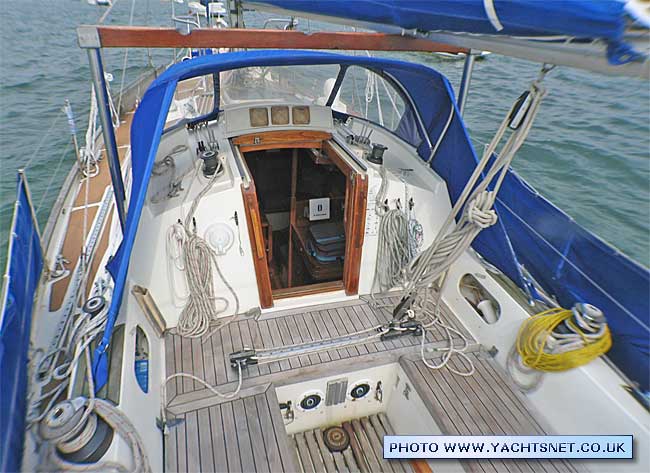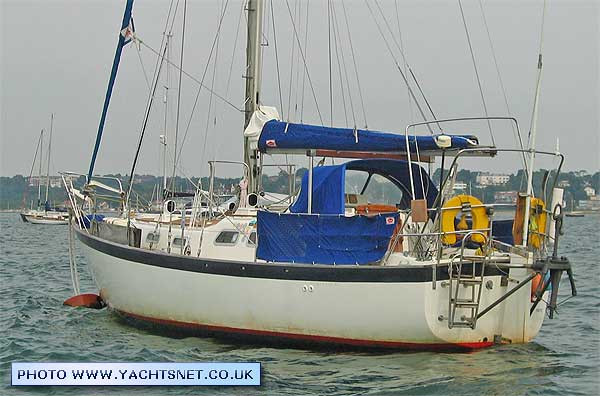| |
|
|
|
|
|
|
|
| © Yachtsnet Ltd. 2000/2025 |
|
|
|
| |
|
|
Yachtsnet's
archive of boat details and pictures
|
| |
The following information and photographs are
displayed as a service to anyone researching yacht types. HOWEVER THE PHOTOGRAPHS AND TEXT ARE COVERED BY COPYRIGHT, AND MAY NOT BE REPRODUCED WITHOUT THE PERMISSION OF YACHTSNET LTD. Details and photographs
are normally based on one specific yacht, but could be a compilation.
No reliance should be placed on other yachts of the same class being
identical. Where common variations exist, we have endeavoured
to indicate this in these archive details. |
Vancouver 32 |
Brief details
|
Builder |
Moulded by Northshore, early boats completed by
Pheon Yachts, later boats by Northshore |
Designed by Robert
Harris of Vancouver, Canada, the Vancouver 32 is a traditional long-keeled
passage maker, although with a great deal more interior space than
many older long-keeled designs. The design is aimed squarely at
long-distance cruising, and is much sought after for this purpose. |
LOA |
32' 0" |
Sail area |
621 sq ft
|
LWL |
27' 6" |
Rig |
Bermudan cutter |
Beam |
10' 7" |
Cabins |
2 |
Draught |
4' 9" |
Berths |
6/7 |
Displacement |
14,000 lbs |
Engine |
originally a Bukh or Watermota diesel, later boats usually have Yanmar diesels
|
Ballast |
6,000 lbs |
BHP |
24 - 30 |
Keel type |
Shallow iron long fin keel |
| |
The Vancouver 32 was designed in 1980/81 as a
larger version of the already successful Vancouver 27/28,
which had established a serious reputation for seaworthiness.
Just over 60 Vancouver 32s were built in England from late
1981 to 1991, initially by Pheon Yachts. Pheon were taken
over in 1986 by Northshore (who moulded the hulls for Pheon),
and from then on UK boats were built entirely by Northshore.
A few boats were also built by Ta Shing in Taiwan for the
US market, but these appear to have a different pilothouse
type deck moulding. Very early Pheon examples had saildrives and a skeg to give additional support to the rudder, later ones relied on the keel extension itself as rudder support. The plan at left shows the later version.
They are very capable long-distance passage-makers, and
many have made extensive cruises. Extended to 34 ft, the Vancouver
34 was until quite recently still in production by Northshore, the main difference
between the two boats is that the stern is stretched on the
34 - the interior is very similar indeed on the Vancouver
32 and 34s. |
Unusually for a long-keeled
boat, the Vancouver 32 can be steered astern quite effectively,
probably due to the large prop aperture separating keel and
rudder. |
|
|
|
